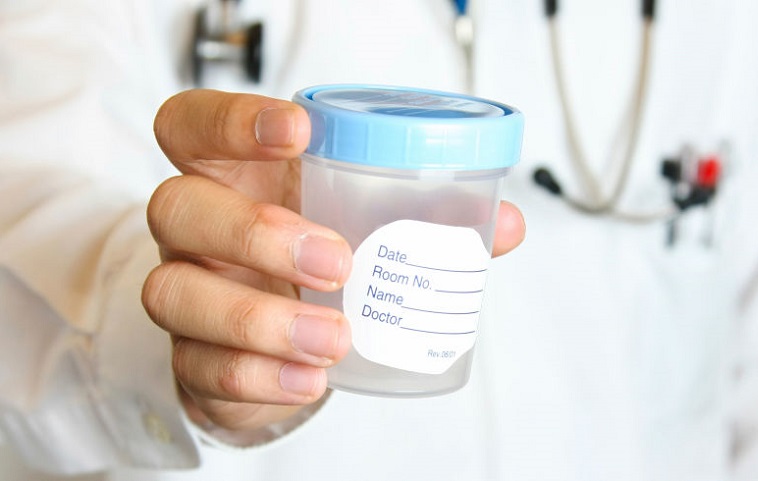When is pregnancy evident after embryo transfer?

Who is eligible for blastocyst transfer?
3 October 2022
Does IVF treatment cause early menopause?
3 October 2022When is pregnancy evident after embryo transfer?

When is pregnancy evident after embryo transfer?
Of course, for couples who want to have a baby, it is very important to be able to conceive naturally. However, this is not always possible and assisted reproductive therapies may be required during pregnancy. There are many treatments that can help couples with infertility problems. The most successful treatment for tuna is in vitro fertilization.
What is in vitro fertilization treatment and how is it performed?
Today, in vitro fertilization is the most successful method of assisted reproductive medicine. In IVF treatment, the reproductive cells of men and women are taken with the help of medical applications, and fertilization is carried out by combining them in the laboratory. 1 or maximum 2 of Embryosobtained in this way are placed in the uterus of the expectant mother and await the onset of pregnancy. While before this stage everything is done by medical methods, the process after the embryo transfer is the same as in a natural pregnancy.
One of the most curious questions of IVF couples is when to find out if they are pregnant or not. Because after a failed attempt at natural pregnancy for some time, in vitro fertilization treatment that occurs after long and often complex treatment processes, after embryo transfer, the result of the treatment is surprising.
How many days will the result of IVF treatment be known?
IVF treatment can be a long and difficult process for some couples. After tests and examinations from the very beginning of this process, monitoring of ovulation, the process of collecting eggs and transferring embryos, the treatment is completed. A period of approximately 1-2 months passes, including the start of IVF treatment and the day of embryo transfer. Although this period is valid for classic IVF treatment, the period will be longer if additional applications are made. For example, in some cases where methods such as uterine rest are used, Embryosare frozen and transferred to the uterus after 1-2 months. In other words, the IVF treatment process can vary depending on the additional treatments a couple needs for their pregnancy. However, after the treatment process is completed and the embryo transfer is performed, a period of 10-12 days is required to find out if there is a pregnancy or not. After 12 days, you can find out if pregnancy has occurred using the Beta-hCG test, performed on the blood of the expectant mother.
What is embryo transfer and how is it done?
In IVF treatment, an embryo is obtained by combining eggs collected during egg collection from the mother with sperm in the laboratory and artificial insemination. Process of placing embryos obtained after fertilization in the laboratory during IVF is called “embryo transfer”. In other words, last stage of IVF treatment is embryo transfer. Embryos derived from eggs fertilized by specialists in the laboratory are placed in the uterus of the expectant mother using a catheter. This process is embryo transfer.
What day is the embryo transfer done?
After fertilization in the laboratory, the most suitable and healthy embryo for pregnancy is placed in the uterus of the expectant mother. This embryo transfer takes place on average 3 or 5 days after receiving the embryo. In fact, for the healthiest and most prosperous pregnancy, this transfer is recommended on the 5th day, i.e. at the stage called the blastocyst. Because embryos that have reached the blastocyst stage, that is, embryos that have reached day 5 in a healthy way, are embryos of the best quality and with a high pregnancy potential. Since a successful pregnancy is aimed at all IVF methods, the main goal is to carry out the transfer of embryos on the 5th day. However, of course, the embryo transfer is usually done on the 3rd day, depending on the age of the expectant mother, the number of developing embryos and the quality of the embryo.
How long after embryo transfer will pregnancy become apparent?
For the most prosperous and healthy pregnancy, embryo transfer on the 5th day is recommended, and in some cases it is transferred on the 3rd day. If the embryo transfer is done on the 5th day at the stage called blastocyst and the conditions are suitable, the embryo attaches to the uterine wall on the same or the next day and pregnancy occurs. However, the diagnosis of pregnancy cannot be made so early. Because it takes a period of 10-12 days for an increase in the value of the hormone measured in blood tests to diagnose pregnancy. In this regard, the best time to conduct a blood test for pregnancy is 10-12 days after the embryo transfer. Between days and usually on the 12th day. Pregnancy status can be checked with a beta-hCG test done during this period.
According to the results of a blood test for pregnancy, it is determined whether pregnancy has occurred and whether the pregnancy will indeed proceed according to the result, although this is not accurate. In fact, the first stage of pregnancy can be commented on by looking at the magnitude of the increase in hormone values in this test, which is done again in the following days. In addition, for IVF specialists, a more important result for accurately determining pregnancy is whether a pouch or a heartbeat can be detected from an ultrasound performed at the 8th week of pregnancy. Because in some cases, although the pregnancy is positive in the blood, the ovum is not visible or the baby’s heartbeat is not heard for various reasons. In this case, it is considered that pregnancy does not occur.
When does a 5-day-old embryo (blastocyst) attach?
In previous IVF methods, multiple pregnancies, such as twins and triplets, were due to the high number of embryos transferred early. Of course, multiple pregnancy also brings some problems. However, when the number of embryos is limited, especially in couples with a certain number of embryos, embryo transfer is carried out during the blastocyst (day 5 embryo), which is the stage of attachment to the uterus. In this regard, the chance of pregnancy can be significantly higher when using the best quality embryos, which can be selected according to the level of development of the pregnancy.
What are the symptoms of pregnancy after embryo transfer?
From embryos carefully obtained in the laboratory, highest quality and healthiest are transferred to the uterus of the expectant mother. Thus, it aims to achieve pregnancy. A blood test for pregnancy is performed on the 12th day after the embryo transfer. Reason for waiting until the 12th day of the test is that Beta-hCG, which is the pregnancy hormone, cannot be detected in the blood before this date, i.e. the hormone release associated with pregnancy is not expected. For this reason, signs and symptoms associated with pregnancy are not felt until the 12th day and beyond. Sometimes the main cause of complaints such as nausea, groin pain, swelling and tenderness of the mammary glands in women who have experienced pregnancy-related symptoms and complaints in the previous period is the hormonal therapy that they receive during treatment.
Most common problems that expectant mothers face, especially in the early period after embryo transfer, are pain in the groin and lower back. Pain in the groin and lower back is very common during pregnancy. As a rule, although the embryo transfer occurs on the 5th day, it is attached within the next 48 hours, that is, implantation occurs. After this adherence, the hormone Beta-hCG begins to increase in the blood, and after the 12th day, the result of pregnancy can be known with a blood pregnancy test. Although there are no obvious signs of pregnancy in this process, brown, light bleeding after the transfer may be implantation bleeding.

